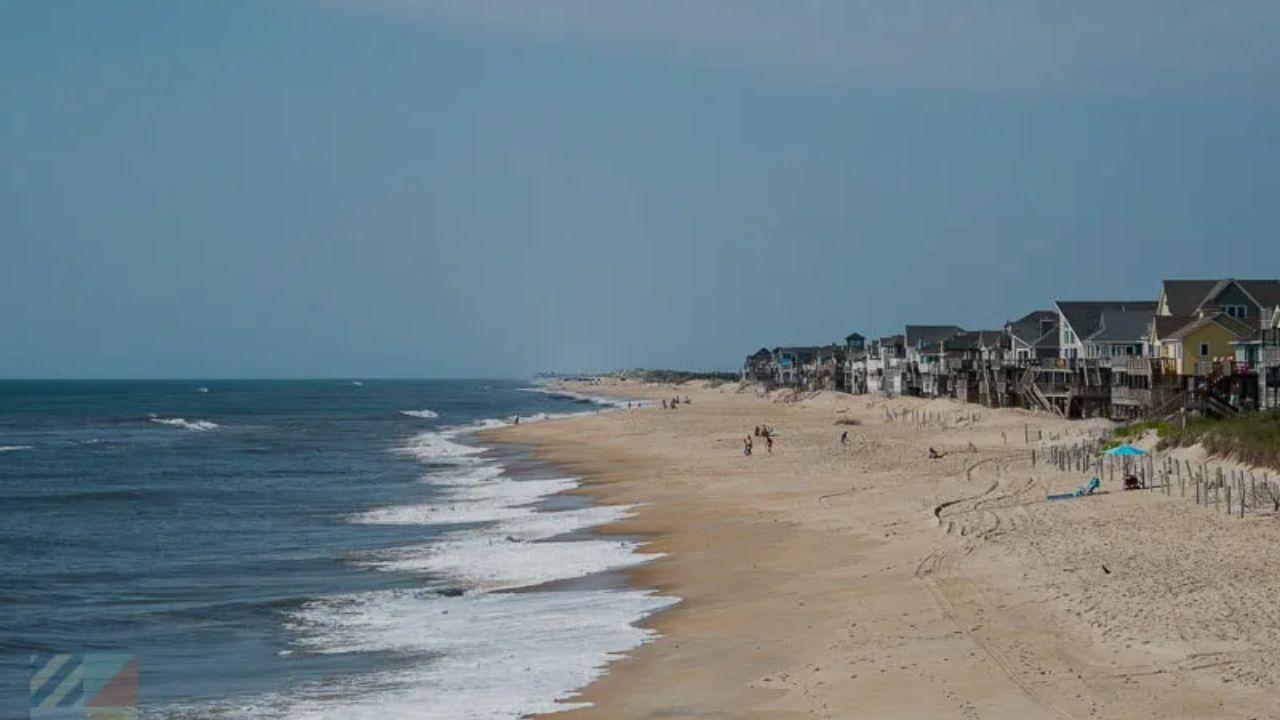CAPE HATTERAS, North Carolina — Known for its sweeping shorelines, towering lighthouses, and vibrant marine life, Cape Hatteras National Seashore attracts thousands of visitors each year. But beyond its postcard-worthy beauty, the Outer Banks destination is also considered one of the most dangerous tourist attractions in the United States, with a long history of treacherous waters, shifting sands, and severe weather.
Why Cape Hatteras Is So Dangerous
Cape Hatteras sits at the point where the warm Gulf Stream meets the cold Virginia Drift, creating unpredictable and often violent conditions in the Atlantic Ocean. This clash of currents produces:
- Rip currents and undertows that sweep swimmers out to sea.
- Sudden storms that form quickly, catching boaters and beachgoers by surprise.
- Unstable sandbars and shifting tides that alter the coastline regularly.
The region has earned the nickname “Graveyard of the Atlantic” because of the countless shipwrecks along its coastline. Even today, despite safety measures, drownings and water-related emergencies remain a serious concern for local authorities.
Weather Hazards Add to the Risks
In addition to dangerous surf conditions, Cape Hatteras is also in the direct path of hurricanes and tropical storms that frequently batter the North Carolina coast. During storm season, the region faces:
- Flooding and erosion that reshape barrier islands.
- Powerful winds capable of knocking out infrastructure.
- Mandatory evacuations when storms approach.
This combination of weather hazards and unstable terrain makes the seashore a uniquely high-risk destination, especially during summer and fall storm seasons.
Historic Attractions Amid the Dangers
Despite the risks, Cape Hatteras offers some of North Carolina’s most celebrated historic and natural attractions. The most famous is the Cape Hatteras Lighthouse, first built in 1803 and rebuilt in 1870, now recognized as the tallest brick lighthouse in the United States.
According to The Wrangler, The lighthouse was originally constructed to warn sailors navigating this perilous stretch of the Atlantic, and today it remains a reminder of the dangers the waters pose. Visitors often climb its spiral staircase to take in sweeping views of the coast.
Read Also: Ohio’s Most Dangerous Tourist Attractions: What Visitors Should Know in 2025
Other highlights include:
- Ocracoke Island, known for its remote atmosphere and the Ocracoke Lighthouse.
- Wildlife spotting, including the endangered loggerhead sea turtle and migratory birds.
- Recreational opportunities, from fishing and kayaking to surfing and beachcombing.
These attractions make the Outer Banks both a place of wonder and a destination where tourists must remain vigilant.
Visitor Safety and Warnings
Because of Cape Hatteras’ reputation, safety officials place a strong emphasis on educating visitors before they enter the water or explore the coastline. Common safety measures include:
- Warning flags and posted signs about rip currents.
- Life-saving equipment placed at beach access points.
- Lifeguarded beaches in certain high-traffic areas.
- Visitor advisories during hurricane season from the National Park Service and National Weather Service.
Local officials stress that swimming outside designated zones or ignoring safety warnings can be life-threatening. Visitors are urged to check surf forecasts and weather alerts before planning activities on the beach or in the water.
Balancing Beauty With Danger
Cape Hatteras National Seashore is a destination that perfectly illustrates the duality of natural beauty and risk. For many, the pristine beaches, remote landscapes, and historic lighthouses are well worth the trip. But for others, the dangers of unpredictable surf and violent weather serve as a reminder of nature’s power.
This balance of allure and danger is precisely what places Cape Hatteras on lists of the most dangerous tourist attractions in North Carolina and the U.S.
Key Takeaways for Visitors
- Rip currents are the greatest threat — always swim in designated areas.
- Hurricane season brings elevated risks — stay updated on weather alerts.
- Historic lighthouses and natural wildlife offer safe sightseeing opportunities away from dangerous surf.
- Preparedness is key — heed warnings, carry safety gear, and respect the ocean.
Final Thoughts
Cape Hatteras National Seashore is one of North Carolina’s most breathtaking destinations, but it is also among the most perilous. Tourists drawn to its beauty must respect the natural risks to ensure a safe and enjoyable visit. From its lighthouse history to its wild Atlantic waters, Cape Hatteras embodies both the wonder and unpredictability of the Outer Banks.
Do you think Cape Hatteras should be better regulated to protect visitors, or is it up to tourists to take responsibility for their own safety? Share your thoughts in the comments at ibwhsmag.com.


 by
by 

